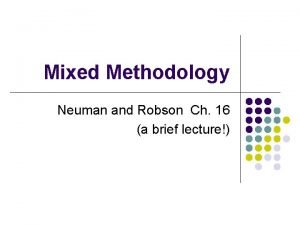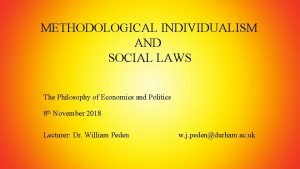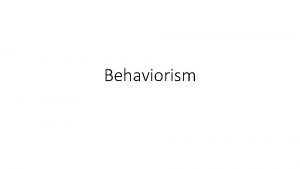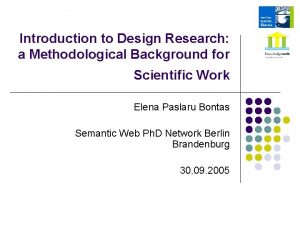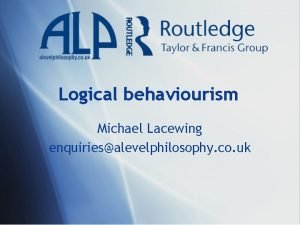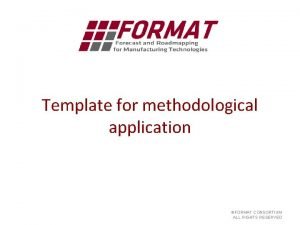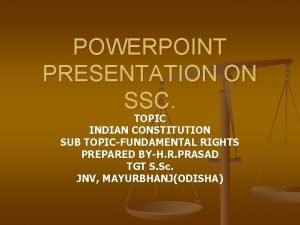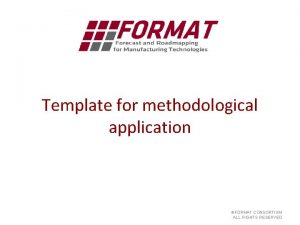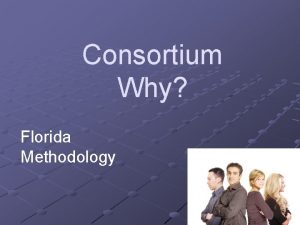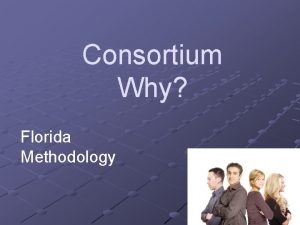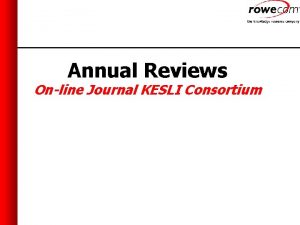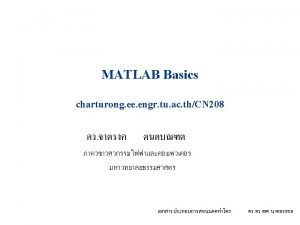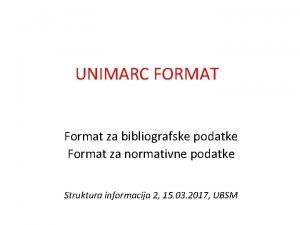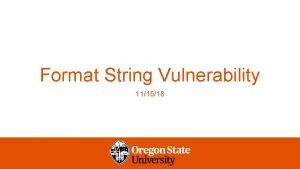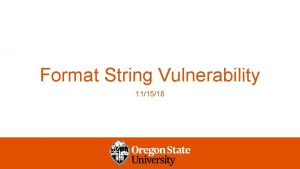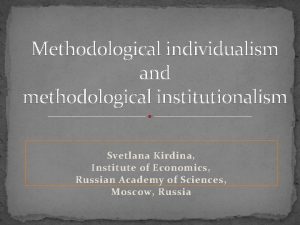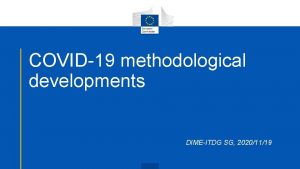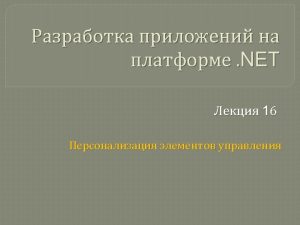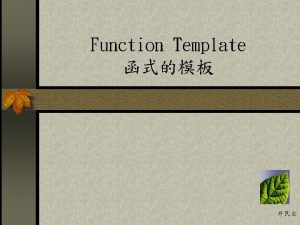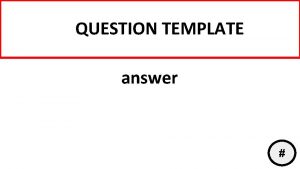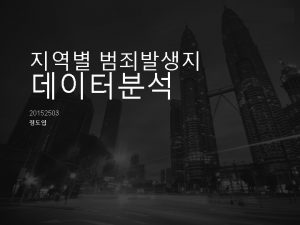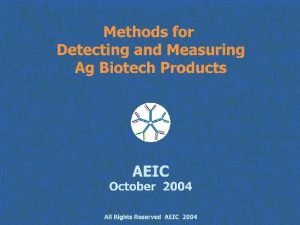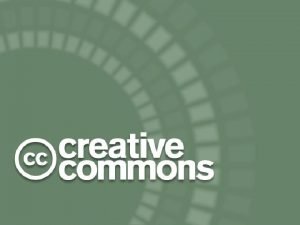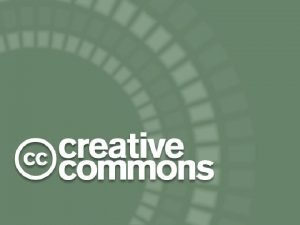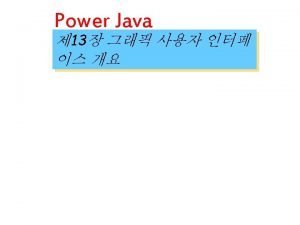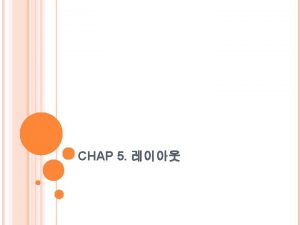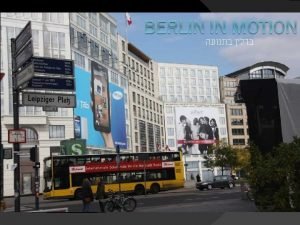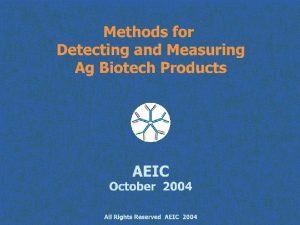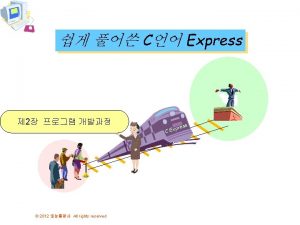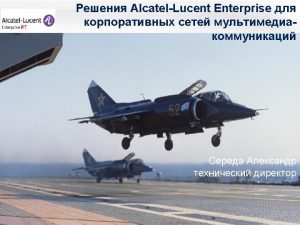Template for methodological application FORMAT CONSORTIUM ALL RIGHTS
























































- Slides: 56

Template for methodological application ©FORMAT CONSORTIUM ALL RIGHTS RESERVED

How to use this template • • Before using this template, please, read these documents: …. . The main function of this template is to store the results of the sessions. This Template gives an answer to the question: What and How to store. The Handbook gives more detail instructions (Step by Step). You can generate a draft version of the Report based on this slides. For this goal, please, write Your text in the field of notes: For References, please, use the last slide in this presentation. In order to generate a draft version of a Report, please, write Your text in the field of notes. 2 ©FORMAT CONSORTIUM ALL RIGHTS RESERVED

Pre-requirements for analysts and experts Text: Make pre-requirements for analysts and experts in terms of knowledge, time…” 3 ©FORMAT CONSORTIUM ALL RIGHTS RESERVED

FORMAT Methodology: Stage-Gate process FORmulate Stage (FOR) Act Stage(A) FOR Model Stage(M) Gate A Transfer Stage(T) Gate M Gate To Decision Maker 4 ©FORMAT CONSORTIUM ALL RIGHTS RESERVED

FORMAT Methodology: Stage-Gate process Factory visit FORmulate Stage (FOR) Session 1 Act Stage (A) Sessions 6, 7, 8, 9 FOR Model Stage (M) Gate Sessions 2, 3, 4 Factory visit A Transfer Stage (T) Gate Session 10 Sessions 11, 12 5 M Gate Session 5 T Gate To Decision Maker ©FORMAT CONSORTIUM ALL RIGHTS RESERVED

FORMAT Methodology definitions of Gates and Stages Stage / Gates Meetings Work Time Participants (FOR) Diagnose questions and plan project 4 h 2 workdays 2 analysts + 4 -6 Users and Beneficiaries (M) Define the system forecast and study contexts 4 hx 4 8 -10 workdays 2 -4 analysts + requested experts (A) Develop forecast for defined system and contexts 4 hx 5 8 -10 workdays 2 -4 analysts + requested specialists (T) Prepare report and present results 4 h 4 h 3 -5 workdays 1 workday 2 analysts + Users and Beneficiaries 6 ©FORMAT CONSORTIUM ALL RIGHTS RESERVED

(FOR) Stage: <to set up> <the project> Y WHY do we need to know the future? • Main objectives of Forecast WHAT do we need to know about the future (I) ? • Main outputs for Decision Makers (DM) • How the outputs will be applied by DM Can we get the required results without Forecast? No TF needed N Session 1 WHAT do we need to know about the future (II) ? • System to be forecasted (STF) • Time horizon • Market scope and geographic context HOW do we plan to learn about future? • Time Diagram • Resource plan for the TF Not compliant 7 Gate FOR To the Model Stage Factory visit ©FORMAT CONSORTIUM ALL RIGHTS RESERVED

FORmulate Stage. Step FOR_1. (Session 1) Highlight Prepare objectives of the project/study from various viewpoints (e. g. beneficiaries, users, technology context, marketing context) WHY do we need to know the future? • Main objectives of Forecast Put your content here 8 ©FORMAT CONSORTIUM ALL RIGHTS RESERVED

FORmulate Stage. Step FOR_1. (Session 1) WHY do we need to know the future? • Main objectives of Forecast More space for your content 9 ©FORMAT CONSORTIUM ALL RIGHTS RESERVED

FORmulate Stage. Step FOR_2. (Session 1) WHAT do we need to know about the future (I) ? • Main outputs for Decision Makers (DM) • How the outputs will be applied by DM Highlight Identify the system to be forecasted and identify what results will be required by the decision makers. Also identify how the decision makers will use the results from the forecast. Put your content here 10 ©FORMAT CONSORTIUM ALL RIGHTS RESERVED

FORmulate Stage. Step FOR_2. (Session 1) WHAT do we need to know about the future (I) ? • Main outputs for Decision Makers (DM) • How the outputs will be applied by DM More space for your content 11 ©FORMAT CONSORTIUM ALL RIGHTS RESERVED

FORmulate Stage. Step FOR_3. GATE. (Session 1) Y Can we get the required results without Forecast? No TF needed Highlight This is a decision step that differentiates forecasting and problem solving activities for the formulated objectives. N Step 4 Put your content here 12 ©FORMAT CONSORTIUM ALL RIGHTS RESERVED

FORmulate Stage. Step FOR_3. GATE. (Session 1) No TF Y Can we get the required results without Forecast? needed N Step 4 More space for your content 13 ©FORMAT CONSORTIUM ALL RIGHTS RESERVED

FORmulate Stage. Step FOR_4. (Session 1) WHAT do we need to know about the future (II) ? • System to be forecasted (STF) • Time horizon • Market scope and geographic context Highlight This step is an elaboration of the activities in Step 1 of Stage FOR – defining main objectives, time horizon of forecasts and market and geographical context of the system to be forecasted Put your content here 14 ©FORMAT CONSORTIUM ALL RIGHTS RESERVED

FORmulate Stage. Step FOR_4. (Session 1) WHAT do we need to know about the future (II) ? • System to be forecasted (STF) • Time horizon • Market scope and geographic context More space for your content 15 ©FORMAT CONSORTIUM ALL RIGHTS RESERVED

FORmulate Stage. Step FOR_5. (Session 1) Highlight While meeting beneficiaries, get decisions about resources allocation – human, data, restricted access permissions – formalize these decisions. HOW do we plan to learn about future? • Time Diagram • Resource plan for the TF Put your content here 16 ©FORMAT CONSORTIUM ALL RIGHTS RESERVED

FORmulate Stage. Step FOR_5. (Session 1) HOW do we plan to learn about future? • Time Diagram • Resource plan for the TF More space for your content 17 ©FORMAT CONSORTIUM ALL RIGHTS RESERVED

FORmulate Stage. GATE “FOR”. (Session 1) Gate FOR To the step 1 Not Compliant To the Model Stage Factory visit Y In order to set up the project and go to the Model Stage we must have: • Main objectives of Forecast (Project) • Definition of knowledge elements for the application of the forecasting results • Definition of Preliminary constraints for the project • Question for Forecast (Questions to be answered at the end of study) • Plan of Project 18 ©FORMAT CONSORTIUM ALL RIGHTS RESERVED

FORmulate Stage. GATE “FOR”. <to set up> <the project> • Main objectives of Forecast (Project) (Why? ) • Definition of knowledge elements for the application of the forecasting results • – Main outputs for Decision Makers (DM) (What? ) – How the outputs will be applied by DM (link between Why-What? ) INTERIM CHECK: Can we get the required results without Forecast? Go/No. Go -> to forecasting project • Definition of Preliminary constraints for the project - System (Process) to be Forecasted (STF) from Technological, Economics, Environmental, Social (TEES) perspectives (What? ) - time horizon (When? ) - market scope and geographic context (Where? ) • Question for Forecast (Questions to be answered at the end of study) • Plan of Project (How? ) – Time diagram (Gantt or similar) – Resources for the activity (People, knowledge, IT instruments, …) 19 ©FORMAT CONSORTIUM ALL RIGHTS RESERVED

(M) Stage: <to model> <existing knowledge> From (FOR)mulate Gate 1 st - WHAT The STF is for? (WHY we need the STF? ) • Model of STF at the functional level 2 nd - WHICH Systems allow to get the same results? • Description of Competitive (Alternative) technologies (solutions) 3 rd - HOW To measure the Performances and the Expenses of the STF and its alternatives? • Expenses are not money but limiting resources: TIMES (time, information, materials, energy, space, knowledge) Session 2 Repeat some sub-stages 4 th – WHAT the STF and its main alternative (s) are, were and are expected to be? Choice - WHAT is the most promising alternative tech? Session 3 • • • Description for STF (and its main alternative? ) with contexts=super-systems (TEES) and sub-systems past history & expected future present trends Gate M Session 5 To the Act Stage Factory visit Session 4 20 ©FORMAT CONSORTIUM 20 ALL RIGHTS RESERVED

Model Stage. Step M_1. (Session 2) 1 st - WHAT The STF is for? (WHY we need the STF? ) • Model of STF at the functional level Highlight Involve people having different viewpoints about the system to be forecasted. Define a uniform and robust vision about the function(s) the system is carrying out. Put your content here 21 ©FORMAT CONSORTIUM ALL RIGHTS RESERVED

Model Stage. Step M_1. (Session 2) 1 st - WHAT The STF is for? (WHY we need the STF? ) • Model of STF at the functional level More space for your content 22 ©FORMAT CONSORTIUM ALL RIGHTS RESERVED

Model Stage. Step M_2. (Session 2) 2 nd - WHICH Systems allow to get the same results? • Description of Competitive Highlight Define what can potentially compete (technical and non-technical solutions) with the STF in the satisfaction of the same overall demand. (Alternative) technologies (solutions) Put your content here 23 ©FORMAT CONSORTIUM ALL RIGHTS RESERVED

Model Stage. Step M_2. (Session 2) 2 nd - WHICH Systems allow to get the same results? • Description of Competitive (Alternative) technologies (solutions) More space for your content 24 ©FORMAT CONSORTIUM ALL RIGHTS RESERVED

Model Stage. Step M_3. (Session 2) 3 rd - HOW To measure the Performances and the Expenses of the STF and its alternatives? • Expenses are not money but limiting resources: TIMES (time, information, materials, energy, space, knowledge) Highlight Retrieve and organize knowledge of the key aspects of the alternative technologies and prepare a comparison with the current technology. Put your content here 25 ©FORMAT CONSORTIUM ALL RIGHTS RESERVED

Model Stage. Step M_3. (Session 2) 3 rd - HOW To measure the Performances and the Expenses of the STF and its alternatives? • Expenses are not money but limiting resources: TIMES (time, information, materials, energy, space, knowledge) More space for your content 26 ©FORMAT CONSORTIUM ALL RIGHTS RESERVED

Model Stage. Step M_4 (Session 3) Highlight Prepare clear description of previously performed steps for facilitating assessment of alternatives. Check consistency of the developed results. All members of the working team should agree on the consolidated results. Choice WHAT is the most promising alternative tech? Put your content here 27 ©FORMAT CONSORTIUM ALL RIGHTS RESERVED

Model Stage. Step M_4 (Session 3) Choice WHAT is the most promising alternative tech? More space for your content 28 ©FORMAT CONSORTIUM ALL RIGHTS RESERVED

Model Stage. Step M_5. (Session 4) 4 th – WHAT the STF and its main alternative (s) are, were and are expected to be? Description for STF (and its main alternative? ) with • • • contexts=super-systems (TEES) and sub-systems past history & expected future present trends Highlight This step allows the team of analysts to harmonize their knowledge through the integration of their different perspectives. Put your content here 29 ©FORMAT CONSORTIUM ALL RIGHTS RESERVED

Model Stage. Step M_5. (Session 4) 4 th – WHAT the STF and its main alternative (s) are, were and are expected to be? Description for STF (and its main alternative? ) with • contexts=super-systems (TEES) and sub-systems • past history & expected future • present trends More space for your content 30 ©FORMAT CONSORTIUM ALL RIGHTS RESERVED

Model Stage. GATE “M” (Session 5) Factory visit Highlight Main Function of the M Gate: <to model> <existing knowledge> Gate M Put your content here 31 ©FORMAT CONSORTIUM ALL RIGHTS RESERVED

Model Stage. GATE “M”. <to model> <existing knowledge> • Model of STF at the functional level (logic as IDEF 0) • Description of Competitive (Alternative) technologies (solutions) • A measure of Performance & Expenses for STF and for Competitive Solutions (Expenses are not money but limiting resources: TIMES (time, information, materials, energy, space, knowledge) - Measures may be presented using ENV model - The measure can be applied as Y axis for S-curves. • Description for STF (logic as System Operator) - contexts=super-systems (TEES) and sub-systems - past history & expected future - present trends 32 ©FORMAT CONSORTIUM ALL RIGHTS RESERVED

(A) Stage: <to identify> <future traits> for STF From Gate M • • Extract limiting resources from problems of STF • Define set of solutions addressing limiting resources What are the most critical problems? Reformulate set of problems into contradictions Identify limiting resources for problems set • • • Session 6 Fit data-series about parameters measuring performance & expenses • • • Collect and clean the data series Fit S-curve Improve quality of fit Session 8 Recognize relevant patterns Analogical reasoning for envisioning future with patterns of evolution Check coherence of the envisioned future with the available information about the context Session 7 • • Build conclusions about future traits for STF To asses features of STF To group (chunk) features into main traits Session 10 Session 9 33 Gate A ©FORMAT CONSORTIUM ALL RIGHTS RESERVED To Stage T

Act Stage. Step A_1. (Session 6) Extract limiting resources from problems of STF • What are the most critical problems? • Reformulate set of problems into contradictions • Identify limiting resources for problems set Highlight List the problems of system to be forecasted (STF) and identify limiting resources that are linked with them. Put your content here 34 ©FORMAT CONSORTIUM ALL RIGHTS RESERVED

Act Stage. Step A_1. (Session 6) Extract limiting resources from problems of STF • What are the most critical problems? • Reformulate set of problems into contradictions • Identify limiting resources for problems set More space for your content 35 ©FORMAT CONSORTIUM ALL RIGHTS RESERVED

Act Stage. Step A_2. (Session 7) Define set of solutions addressing limiting resources • • • Recognize relevant patterns Analogical reasoning for envisioning future with patterns of evolution Check coherence of the envisioned future with the available information about the context Highlight Identification of direction of technological development based on historical evolution of the STF. Envisioning the characteristics of future solutions for the STF Put your content here 36 ©FORMAT CONSORTIUM ALL RIGHTS RESERVED

Act Stage. Step A_2. (Session 7) Define set of solutions addressing limiting resources • Recognize relevant patterns • Analogical reasoning for envisioning future with patterns of evolution • Check coherence of the envisioned future with the available information about the context More space for your content 37 ©FORMAT CONSORTIUM ALL RIGHTS RESERVED

Act Stage. Step A_3. (Session 8) Highlight Identify by quantitative measurements how technology-related parameters have evolved in the last years. Forecast by quantitative trend extrapolation how a technology is going to continue its evolution in the next years. Fit data-series about parameters measuring performance & expenses • Collect and clean the data series • Fit S-curve • Improve quality of fit Put your content here 38 ©FORMAT CONSORTIUM ALL RIGHTS RESERVED

Act Stage. Step A_3. (Session 8) Fit data-series about parameters measuring performance & expenses • Collect and clean the data series • Fit S-curve • Improve quality of fit More space for your content 39 ©FORMAT CONSORTIUM ALL RIGHTS RESERVED

Act Stage. Step A_4. (Session 9) Build conclusions about future traits for STF • To asses features of STF • To group (chunk) features into main traits Highlight Clear description of results from Stage M and Steps A_1, A_2, A_3 of Stage A has to be prepared. The developed result should be harmonized and checked for consistency. All members of working team should agree on the elaborated results within Step A_4. Put your content here 40 ©FORMAT CONSORTIUM ALL RIGHTS RESERVED

Act Stage. Step A_4. (Session 9) Build conclusions about future traits for STF • To asses features of STF • To group (chunk) features into main traits More space for your content 41 ©FORMAT CONSORTIUM ALL RIGHTS RESERVED

Act Stage. Gate “A”. (Session 10) Highlight Main Function of the A Gate: <to identify> <future traits> of the system to be forecasted (STF) Gate A Put your content here 42 ©FORMAT CONSORTIUM ALL RIGHTS RESERVED

Act Stage. Gate “A” <to identify> <future traits> for System to be Forecasted (STF) • List of limiting resources preventing the solutions to problems that drives evolution of STF. • Directions of development of new solutions for STF (evolutionary trends) • Dynamics of parameter(s) measuring Performance & Expenses for STF (data series and graphs) • Aggregated conclusions about future traits for STF 43 ©FORMAT CONSORTIUM ALL RIGHTS RESERVED

(T) Stage: <to translate> <conclusions about traits for STF> to DM From Gate A Conclusion on answer to the Question to be Forecasted • • Use conclusions from (A) to answer main question about STF Refer to objectives and conditions set by beneficiaries and users Shape executive summary and presentation • Prepare text form • Prepare presentation slides form Add final inputs into report • Report on stage (A) • Report conclusions to be presented Session 11 Deliver presentation to Beneficiaries and Users Session 12 Gate T DM is satisfied. DM requires further study. 44 The End • Next round Start from (FOR) ©FORMAT CONSORTIUM ALL RIGHTS RESERVED

Transfer Stage. Step T_1. (Session 11) Conclusion on answer to the Question to be Forecasted • Use conclusions from (A) to answer main question about STF • Refer to objectives and conditions set by beneficiaries and users Highlight Definitive description of results of Stage A has to be developed and agreed in advance. This step requires active participation from users of forecast in order to ensure clarity of answers. Put your content here 45 ©FORMAT CONSORTIUM ALL RIGHTS RESERVED

Transfer Stage. Step T_1. (Session 11) Conclusion on answer to the Question to be Forecasted • Use conclusions from (A) to answer main question about STF • Refer to objectives and conditions set by beneficiaries and users More space for your content 46 ©FORMAT CONSORTIUM ALL RIGHTS RESERVED

Transfer Stage. Step T_2. (Session 11) Add final inputs into report • Report on stage (A) • Report conclusions to be presented Highlight Complete the report of the project until the end of Stage A. Put your content here 47 ©FORMAT CONSORTIUM ALL RIGHTS RESERVED

Transfer Stage. Step T_2. (Session 11) Add final inputs into report • Report on stage (A) • Report conclusions to be presented More space for your content 48 ©FORMAT CONSORTIUM ALL RIGHTS RESERVED

Transfer Stage. Step T_3. (Session 11) Shape executive summary and presentation • Prepare text form • Prepare presentation slides form Highlight Present the answers to the question forecast and support the answers with qualitative and quantitative arguments. Put your content here 49 ©FORMAT CONSORTIUM ALL RIGHTS RESERVED

Transfer Stage. Step T_3. (Session 11) Shape executive summary and presentation • Prepare text form • Prepare presentation slides form More space for your content 50 ©FORMAT CONSORTIUM ALL RIGHTS RESERVED

Transfer Stage. Step T_4. (Session 12) Highlight The STF, question forecast and the answers to the question forecasts will be presented to the beneficiaries. Deliver presentation to Beneficiaries and Users Put your content here 51 ©FORMAT CONSORTIUM ALL RIGHTS RESERVED

Transfer Stage. Step T_4. (Session 12) Deliver presentation to Beneficiaries and Users More space for your content 52 ©FORMAT CONSORTIUM ALL RIGHTS RESERVED

Transfer Stage. Gate “T”. Highlight Main Function of the T Gate: <to translate> <conclusions about traits for STF> to DM Gate T Put your content here 53 ©FORMAT CONSORTIUM ALL RIGHTS RESERVED

Transfer Stage. Gate “T” <to translate> <conclusions about traits for STF> to DM • Answer the Question to be Forecasted (from (FOR) Gate) • Executive summary • Report • Presentation 54 ©FORMAT CONSORTIUM ALL RIGHTS RESERVED

Conclusion (Afterword) • Text: …. . 55 ©FORMAT CONSORTIUM ALL RIGHTS RESERVED

References • Text: …. . 56 ©FORMAT CONSORTIUM ALL RIGHTS RESERVED
 Methodological integrity
Methodological integrity Sample rationale of the study
Sample rationale of the study Methodological individualism weber
Methodological individualism weber Methodological behaviorism
Methodological behaviorism Methodological background
Methodological background Methodological behaviourism
Methodological behaviourism Consortium format
Consortium format Positive rights and negative rights
Positive rights and negative rights Riparian and littoral rights
Riparian and littoral rights Duty towards self
Duty towards self Legal rights and moral rights
Legal rights and moral rights Negative right
Negative right Negative rights vs positive rights
Negative rights vs positive rights Negative rights vs positive rights
Negative rights vs positive rights Positive rights and negative rights
Positive rights and negative rights Name three line segments
Name three line segments Fundamental rights ppt template
Fundamental rights ppt template Specification by example
Specification by example Copyright 2015 all rights reserved
Copyright 2015 all rights reserved All rights reserved sentence
All rights reserved sentence Creative commons vs all rights reserved
Creative commons vs all rights reserved Confidential all rights reserved
Confidential all rights reserved Sentinel value
Sentinel value Copyright 2015 all rights reserved
Copyright 2015 all rights reserved Pearson education inc all rights reserved
Pearson education inc all rights reserved Microsoft corporation. all rights reserved.
Microsoft corporation. all rights reserved. Microsoft corporation. all rights reserved.
Microsoft corporation. all rights reserved. Microsoft corporation. all rights reserved.
Microsoft corporation. all rights reserved. Pearson education inc. all rights reserved
Pearson education inc. all rights reserved Dell all rights reserved copyright 2009
Dell all rights reserved copyright 2009 Warning all rights reserved
Warning all rights reserved All rights reserved c
All rights reserved c All rights reserved formula
All rights reserved formula Warning all rights reserved
Warning all rights reserved Confidential all rights reserved
Confidential all rights reserved Microsoft corporation. all rights reserved
Microsoft corporation. all rights reserved Pearson education inc. all rights reserved
Pearson education inc. all rights reserved Copyright © 2018 all rights reserved
Copyright © 2018 all rights reserved Gssllc
Gssllc Copyright 2010 pearson education inc
Copyright 2010 pearson education inc 2010 pearson education inc
2010 pearson education inc Confidential all rights reserved
Confidential all rights reserved Confidential all rights reserved
Confidential all rights reserved Kontinuitetshantering
Kontinuitetshantering Typiska drag för en novell
Typiska drag för en novell Tack för att ni lyssnade bild
Tack för att ni lyssnade bild Returpilarna
Returpilarna Varför kallas perioden 1918-1939 för mellankrigstiden?
Varför kallas perioden 1918-1939 för mellankrigstiden? En lathund för arbete med kontinuitetshantering
En lathund för arbete med kontinuitetshantering Adressändring ideell förening
Adressändring ideell förening Tidböcker
Tidböcker Sura för anatom
Sura för anatom Förklara densitet för barn
Förklara densitet för barn Datorkunskap för nybörjare
Datorkunskap för nybörjare Boverket ka
Boverket ka Debatt artikel mall
Debatt artikel mall Delegerande ledarstil
Delegerande ledarstil

